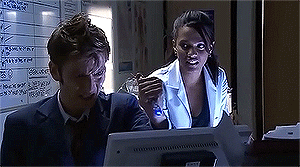My wonderful mate Walter Mason and I have many things in common. A love of travel, good food, good books, good conversations over good food about good books, and one more thing - we are both currently trapped in Second Book Hell. Forget your Nine Circles of Hell, Second Book Hell is a very particular hell.
Read on and let Walter explain exactly what it is.
Don’t Write a
Second Book
My major piece of advice to any writer would be: Don’t write
a second book. Seriously. Why not just leave it at the one little masterpiece,
a brief high point in an otherwise mundane life. No-one will think any less of
you. You could easily waste the rest of your life, but at your funeral they are
still going to say, “The well-known and beloved author...” Plenty of people
stopped at the one with little or no repercussions for their literary
reputation. Harper Lee seems to be doing ok with just the one. Margaret
Mitchell decided to take a break between books and got hit by a car, but last time
I checked Gone With the Wind is still
the same camp classic it always was.
I’m writing like this because I am almost finished my own
second book, a travel memoir about my conflicted relationship with
Cambodia
(yes, I have relationships with entire countries – I never promised I’d be
exclusive) called
Destination Cambodia.
It’s due to come out this year some time, if I haven’t taken the Margaret
Mitchell route or been arrested in a public place giving in to a fit of
rage.
 |
| Walter Mason in Cambodia. Research! The fun part of the Second Book. |
But you see, it hasn’t been at all easy, this second book.
Destination Saigon, my first book,
flowed out of me. It was the product of a lifetime’s preoccupation. I had been
toying with the idea of writing a “Vietnam book” for the best part of sixteen
years. Each chapter came out almost perfectly formed, and I found it a breeze
to sit down and write one at set times (many of them during a holiday in Hong
Kong, where my partner wouldn’t allow me to eat or sightsee until I had
finished another chapter).
But
DestinationCambodia has been a very different beast. It has demanded its weight in
blood, sweat and tears, and there comes a point every week where I stop and
think, in blind despair, “I can’t do this.” When I actually concentrate and get
writing, it begins to snake its way out, and stories and characters and amusing
and poignant incidents emerge on paper. This is most likely to happen when I am
writing properly, i.e. sitting down at 7.30 every morning, turning off Twitter
and forcing myself to belt out 4,000 words or so. If I can manage to do this
for a number of days, I convince myself once more that I am a literary genius.
 |
| In the field for the Second Book. |
But on those other days, those ones where nothing at all
comes to mind and before I know it it’s 6pm and all I’ve done is watch Fail
compilations on Youtube for nine hours, I begin to think I’ve been fooling
myself and everyone else. Those are the days when I wonder if Red Rooster is
still hiring.
What’s the big deal? I hear you ask. Plenty of people have
more difficult jobs, real jobs where the stress and strain is earned. Brain
surgeons, say, or bridge builders. But the writer is the most fragile creature
in existence, always conscious of what Jonathan Fields describes as “the impact
of fear of judgement on our tolerance for ambiguity, uncertainty, risk taking
and creativity.” We can destroy ourselves before we’ve even written a word. It
is our unique talent.
But it’s too late for me. I’ve signed the contract and
someone told me they saw the book listed in my publisher’s catalogue, as though
it were finished and just sitting up on a shelf ready to roll out in cartons
across the nation. What’s more, I have written 100,000 words, and still there
seems to be no end in sight. It’s not that I’m almost there. It’s that I went
past the finish line a long time ago and have almost woven my way around to it
a second time.
So stop stressing, fellow scribblers, there’s no need to do
anything more. Rest on your laurels, glory in your obscure fame and think of
the lifetime of free cheap wine and invitations to speak at service clubs that
can be yours purely on the basis of that first, blissfully easy, book you
wrote.
---------------------------------------------------------------------------------------------
Walter Mason is a
travel writer and academic whose first book, “Destination Saigon,” was named by
the Sydney Morning Herald one of the Ten Best Travel Books of 2010.
In 2013 Walter’s
second book, “Destination Cambodia,” is due to be released by Allen &
Unwin, when he eventually finishes it.
This year Walter is also
hosting a series of Inspirational Conversations with some of Australia’s
leading authors at Ultimo Library. Details can be found here.


























